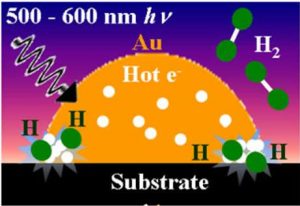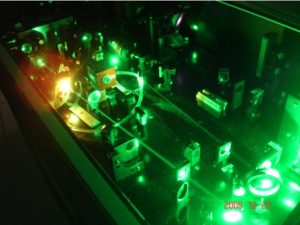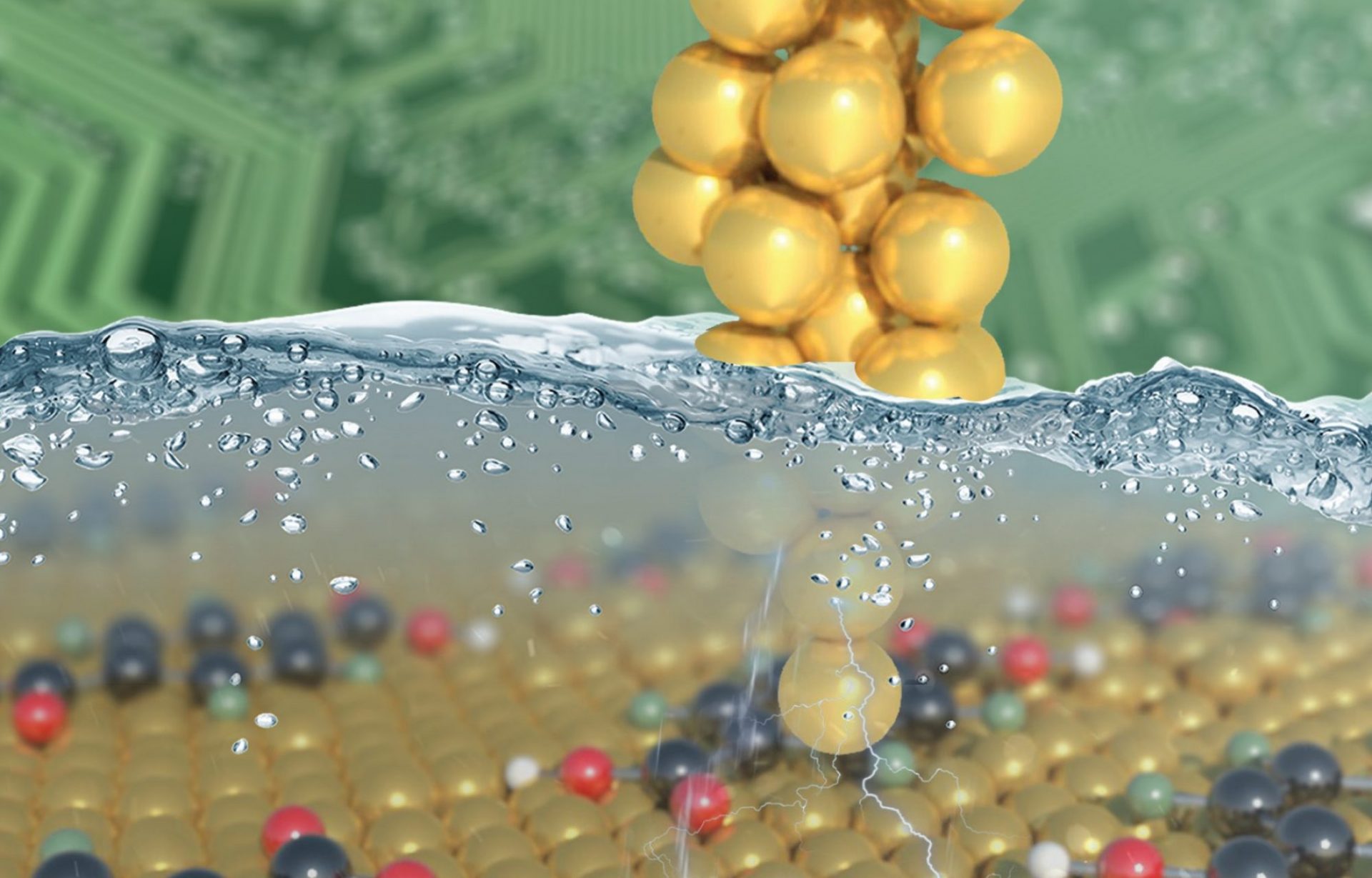Plasmonic sensing
We use LSPR of metal nanoparticels to detect gases in the atmosphere and ions in solution via changes in optical transmission providing a simple sensing platform. We have discovered that the excitation of the LSPR of a thin film of Au nanoparticles in the presence of Hydrogen gas leads to rapid and reversible changes in the LSPR. The mechanism of sensing is still under debate. However, it is believed that the LSPR produces hot electrons that can provoke chemical reactions, e.g., dissociation of molecules. In the case of hydrogen this could lead to the formation of a metastable gold hydride with optical properties distinct from the initial Au nanostructures.

Plasmonic Dynamics and Catalysis
As our plasmonic hydrogen sensing experiments show, hot electrons can drive chemistry. However, the precise nature of the intermediates and even the products is not clear. In addition, timescales and dynamics of the elementary steps are unknown. We will use a variety of experimental tools, including our novel ultra-braodband (~3000 cm-1, 90 THz, <25fs), infrared optical parametric amplifiers (OPAs), to understand and harness plasmonic processes for solar energy harvesting and catalysis.

